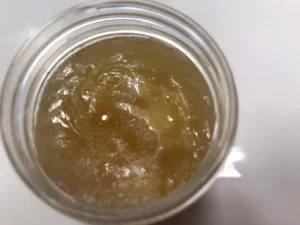What is Slack Wax?
Slack wax is a vital ingredient used in various industries. It is a byproduct of the petroleum refining process. In addition, it has been an integral part of the industry since the early 20th century. Originating during the de-waxing stage of oil refining, this versatile substance is characterized by its varying oil content. For instance, the product generally contains oil between 10% to 30% ranges.
Initially seen as a mere byproduct, its value was soon recognized in numerous applications, from candle making to lubricants. Over time, advancements in refining techniques have allowed for the production of different grades of slack wax, catering to diverse industrial needs. This evolution underscores the adaptive nature of the petroleum industry in utilizing every aspect of crude oil.
Types and Grades of Slack Wax
Slack wax can be used in different industries. Therefore, the material has different grades and types. To learn more about the types of slack wax, you can check below:
- Light Slack Wax:
- Ideal for mild applications like cosmetics and polishes.
- Lower oil content for a less greasy finish.
- Heavy Slack Wax:
- Suited for more robust applications such as waterproofing and industrial lubricants.
- Higher oil content provides extra durability.
- Refined Grades:
- Undergo additional processing for purity.
- Used in sensitive applications like food-grade products.
- Unrefined Grades:
- More natural state, retaining more oil.
- Common in candle making and coating materials.
Production Process
Slack Wax is efficiently produced during Group I lube base oil manufacturing. The process involves chilling and filtering the feedstock, resulting in eco-friendly Slack Wax, a sustainable byproduct of this meticulous production method.
Crude Oil Distillation:
- The process begins with the distillation of crude oil.
- Separates the oil into various components, including waxy materials.
Solvent Dewaxing:
- The waxy substance undergoes solvent dewaxing.
- Solvents like propane are used to extract the slack wax.
Refining:
- Refined slack wax undergoes further processing to remove impurities.
- Ensures consistency in quality and texture.
Packaging and Distribution:
- The final product is then packaged.
- Distributed to various industries based on their specific requirements.
Applications of Slack Wax
Slack wax finds its way into a myriad of applications, each utilizing its unique properties. Some of the key applications include:
- Candle Making:
- Adds structure and stability to candles.
- Enhances burning time and consistency.
- Polishes and Coatings:
- Used in floor and furniture polishes.
- Provides a protective, glossy finish.
- Lubricants:
- Integral in manufacturing industrial lubricants.
- Reduces friction in machinery and tools.
- Cosmetics and Personal Care:
- Ingredient in creams, lotions, and makeup.
- Offers texture and moisture-retention properties.
- Waterproofing Products:
- Essential in producing waterproof coatings for fabrics and leathers.
- Ensures durability and longevity in harsh conditions.
Sustainability and Environmental Impact
Slack wax contributes to sustainability through its efficient utilization of resources. By deriving value from what would otherwise be a waste product, the industry minimizes environmental impact.
Modern production methods focus on reducing emissions and enhancing energy efficiency, thereby aligning with eco-friendly practices. In applications, slack wax replaces synthetic alternatives with a more naturally degradable option, reducing long-term environmental footprint.
Lastly, ongoing innovations in refining technologies are constantly improving the environmental profile of slack wax production. This commitment to eco-consciousness in both production and application underlines the potential of slack wax as a component in sustainable industry practices.
Download Properties
Download Properties
Download Properties


